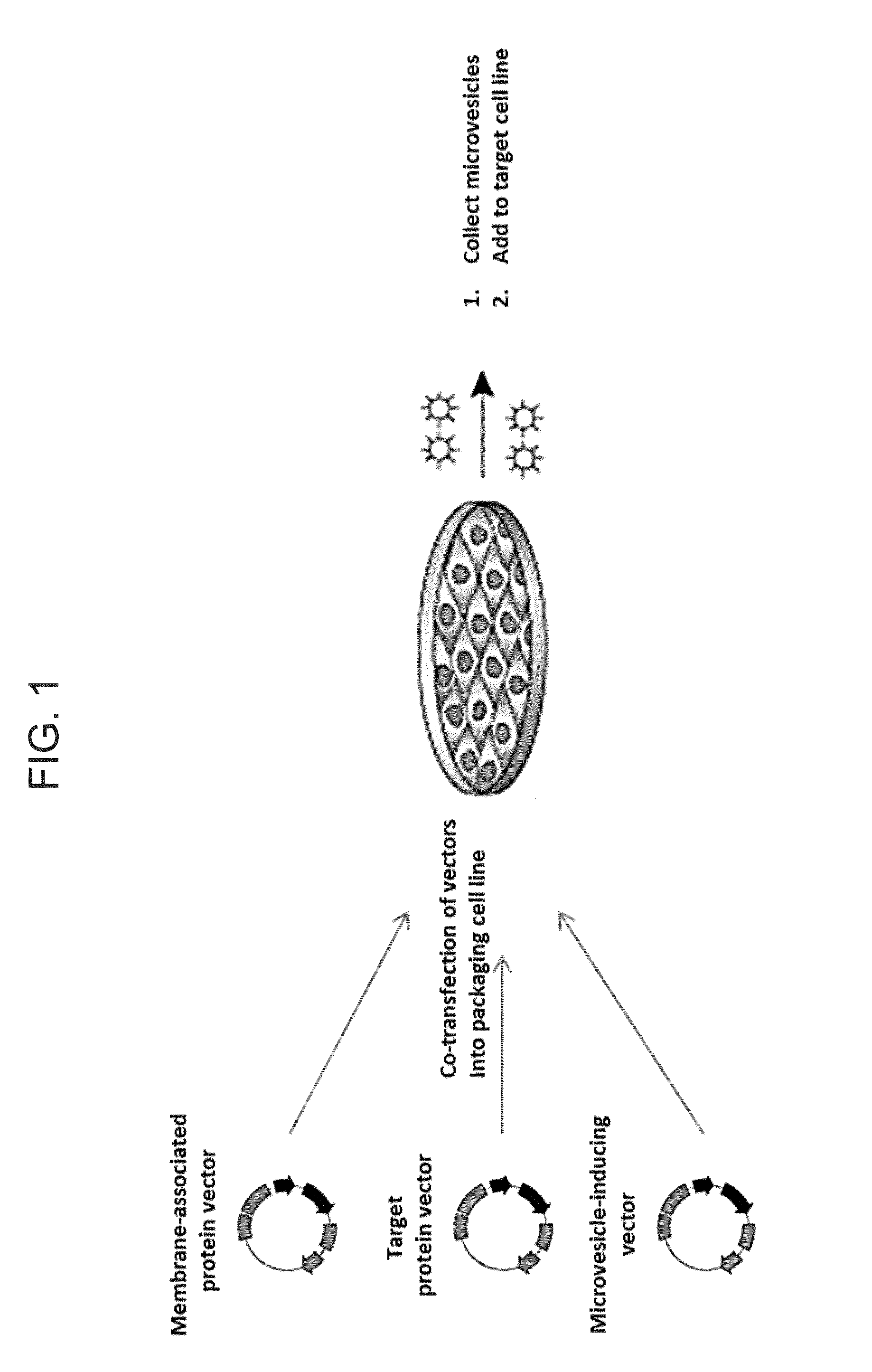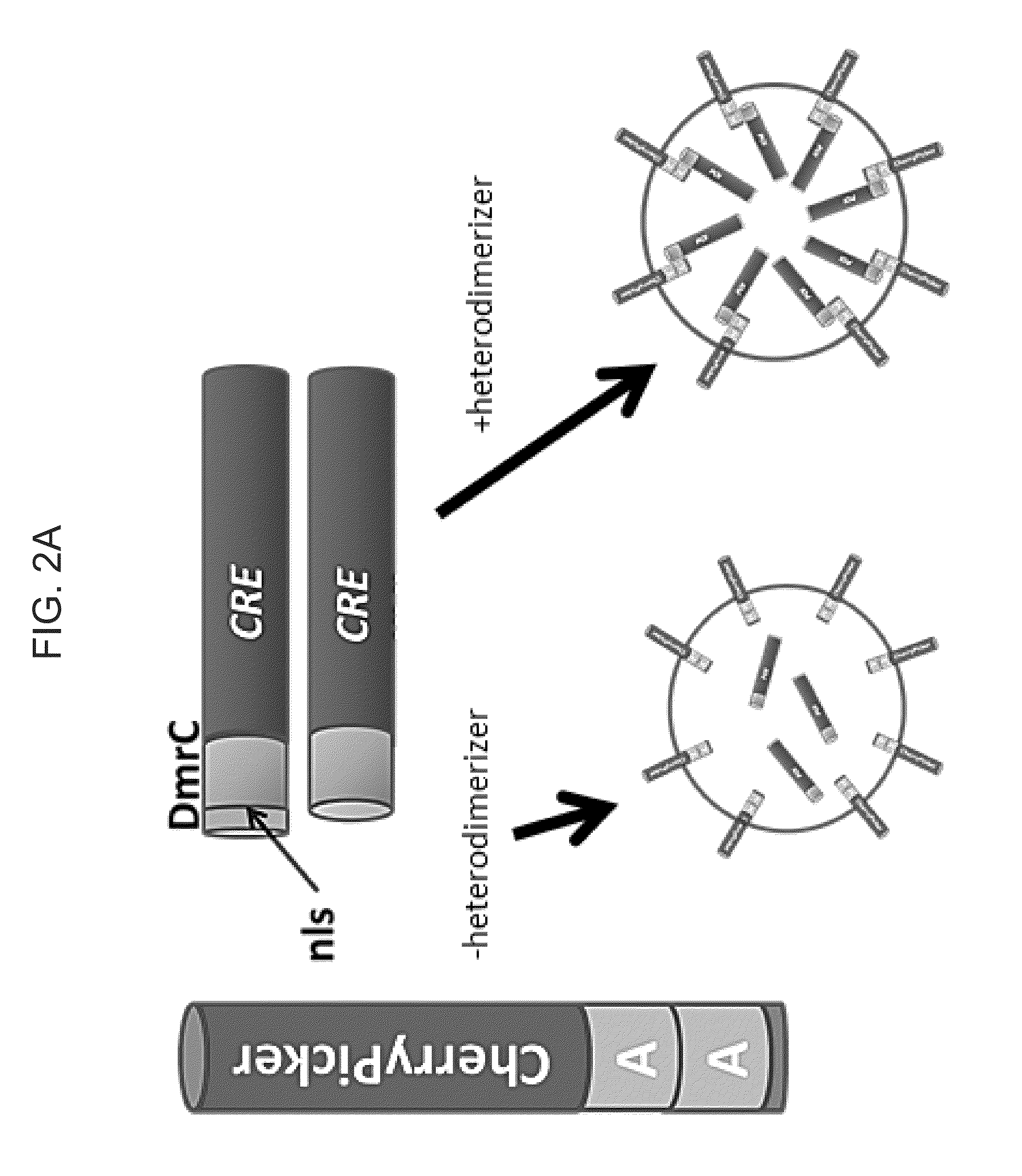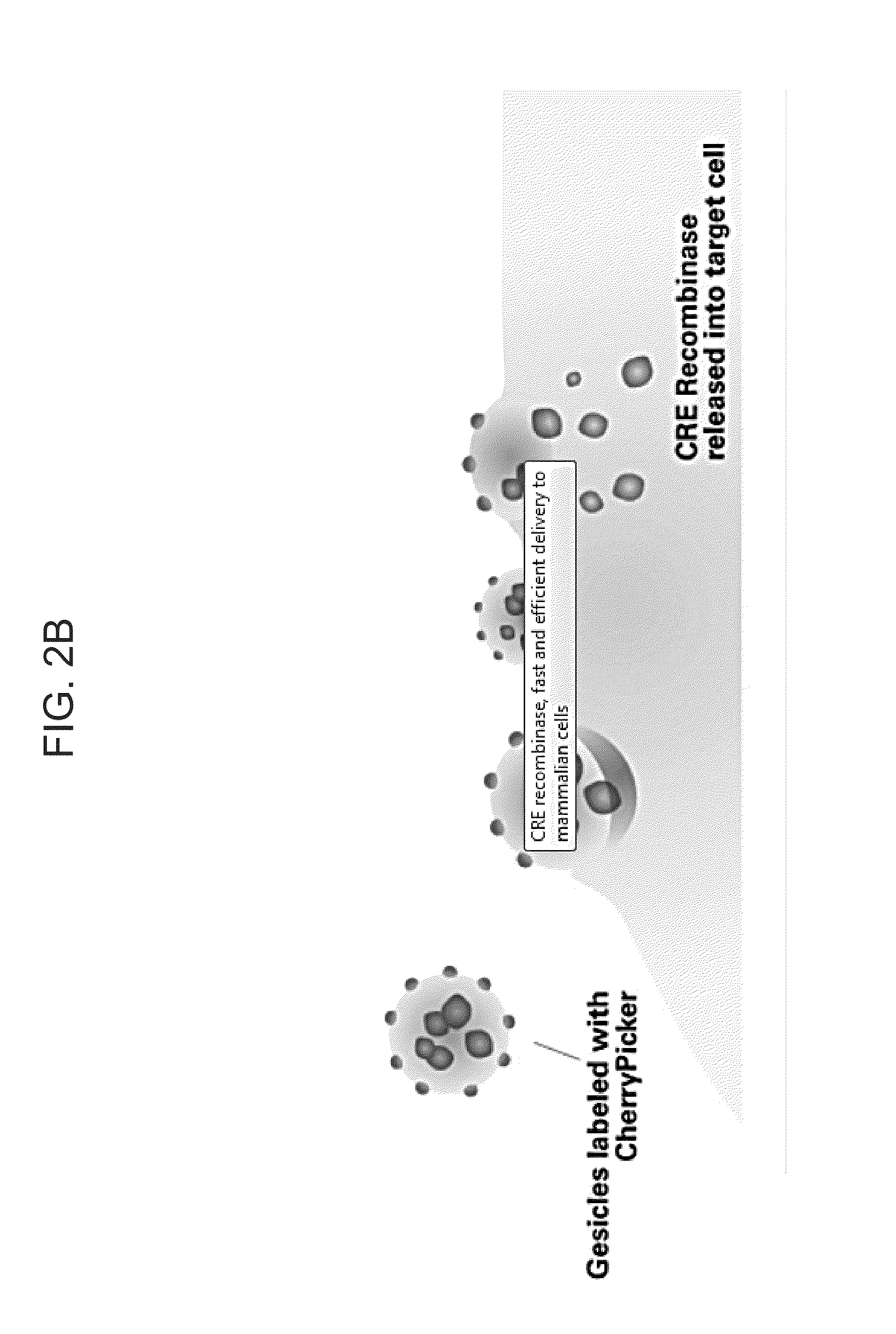Protein enriched microvesicles and methods of making and using the same
a technology of microvesicles and enriched proteins, applied in the direction of viruses/bacteriophages, peptide sources, peptide sources, etc., can solve the problems of recombinant protein production, solubility, yield, and correct folding and post-translational modification, and do not allow the delivery of recombinant membrane proteins
- Summary
- Abstract
- Description
- Claims
- Application Information
AI Technical Summary
Benefits of technology
Problems solved by technology
Method used
Image
Examples
example i
[0093]Directed packaging of a protein was tested by creating a matched pair of binding partners utilizing the ligand-inducible heterodimerization domains contained in the iDimerize System (Clontech, Mountain View, Calif.). The binding partners consisted of the ChemyPicker protein (a membrane-targeted red fluorescent protein) fused to two DmrA domains and the CRE recombinase enzyme fused to a single DmrC domain, as illustrated in FIG. 2A. The ChemyPicker and CRE expression plasmids were co-transfected with a VSV-G expression plasmid into 293T cells as illustrated in FIG. 1 and allowed to incubate for 48-72 hours to produce micro-vesicles either in the presence or absence of the NC heterodimerizer.
[0094]Micro-vesicles were collected and assayed for relative CRE protein amount by Western blot using an anti-DmrC antibody.
[0095]In addition, micro-vesicles were also assayed for CRE activity in a cell-based assay. CRE micro-vesicles were added to a cell line that required CRE to express a ...
example ii
[0098]Ligand dependent enrichment into gesicles has been shown for cytoplasmic proteins (Example: cytosolic AcGFP) yielding an 8 to 10 fold increase of target protein packaging efficiency into the gesicles. ChemyPicker and AcGFP expression plasmids were co-transfected with a VSV-G expression plasmid into 293T cells to produce micro-vesicles either in the presence or absence of the NC heterodimerizer. Micro-vesicles were collected and assayed for relative AcGFP protein amount by Western blot using an anti-DmrC antibody. Densitometric analysis of bands of similar intensity revealed that packaging of the AcGFP in the presence of the NC heterodimerizer was 8-10-fold more efficient than packaging without the NC heterodimerizer. The results are shown in FIG. 3 and provided in the Table 1 below:
TABLE 1SampleAmount1DmrC AcGFP microvesicle (−) 5 uL2DmrC AcGFP microvesicle (−) 2.5 uL3DmrC AcGFP microvesicle (−) 1.25 uL4DmrC AcGFP microvesicle (−)0.625 uL 5DmrC AcGFP microvesicle (+) 5 uL6D...
PUM
| Property | Measurement | Unit |
|---|---|---|
| dissociation constant | aaaaa | aaaaa |
| dissociation constant | aaaaa | aaaaa |
| dissociation constant | aaaaa | aaaaa |
Abstract
Description
Claims
Application Information
 Login to View More
Login to View More - R&D
- Intellectual Property
- Life Sciences
- Materials
- Tech Scout
- Unparalleled Data Quality
- Higher Quality Content
- 60% Fewer Hallucinations
Browse by: Latest US Patents, China's latest patents, Technical Efficacy Thesaurus, Application Domain, Technology Topic, Popular Technical Reports.
© 2025 PatSnap. All rights reserved.Legal|Privacy policy|Modern Slavery Act Transparency Statement|Sitemap|About US| Contact US: help@patsnap.com



